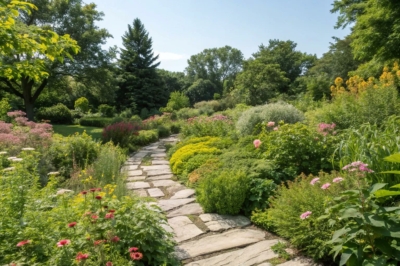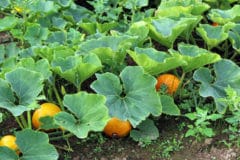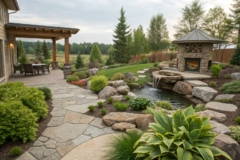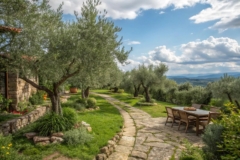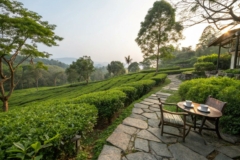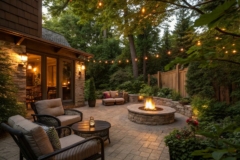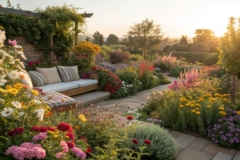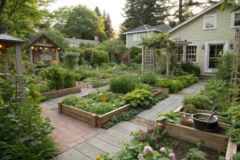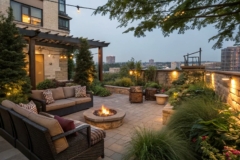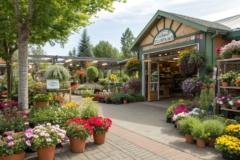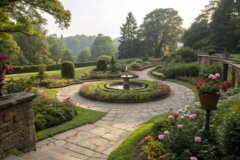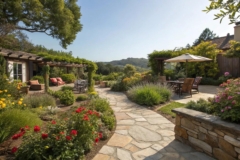1. Functional Hardscaping
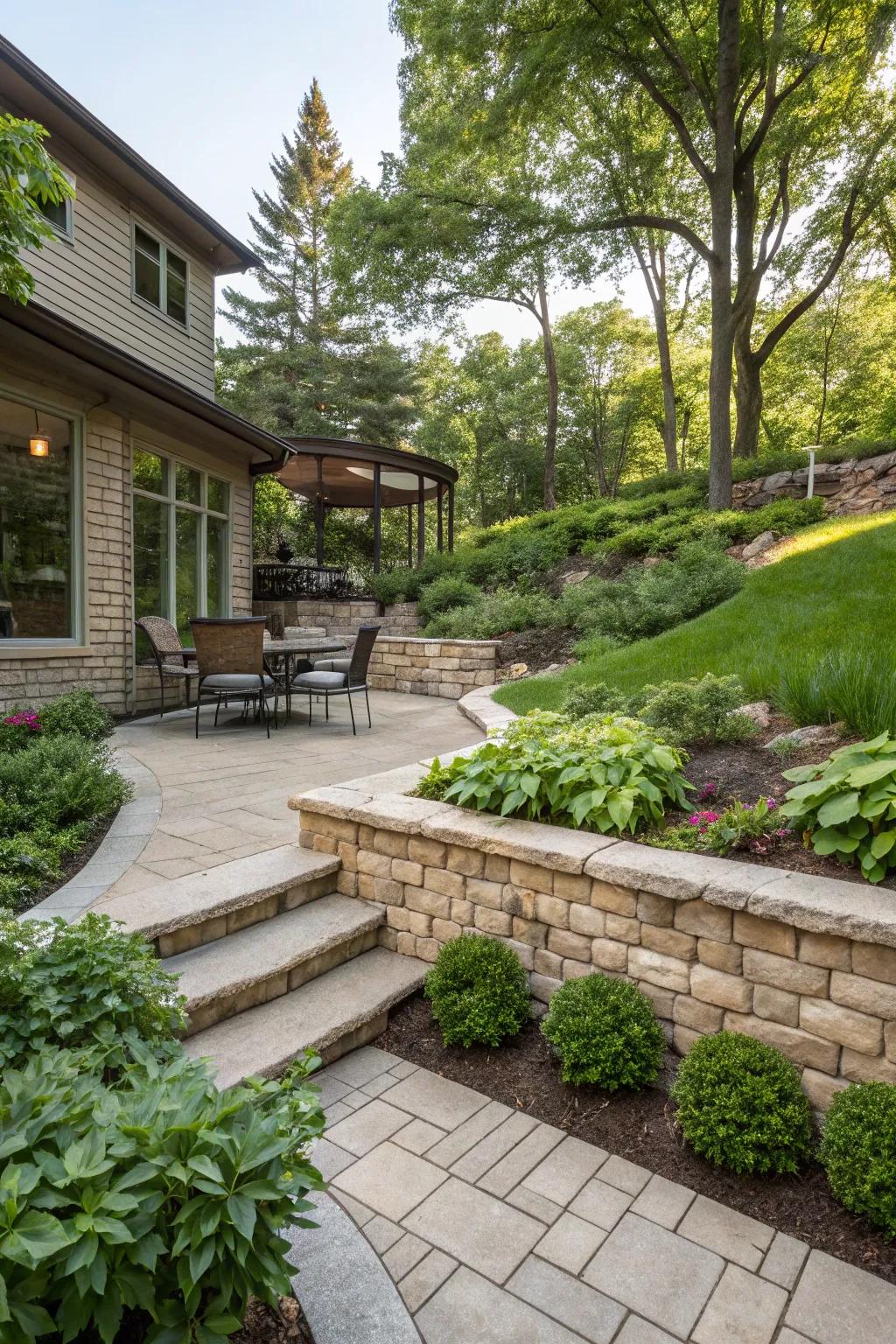
Incorporate hardscaping elements like patios and retaining walls for durability and style. I love how these structures add structure and function to my garden.
Maybe worth checking out:
- Outdoor Patio Pavers: Enhance your garden’s style with durable patio pavers, perfect for any outdoor setting.
- Stone Retaining Wall Blocks: Add both function and elegance with stone retaining wall blocks for your garden landscape.
- Garden Pathway Stepping Stones: Create charming garden paths with these decorative stepping stones, inviting and practical for any yard.
2. Cozy Outdoor Living Spaces
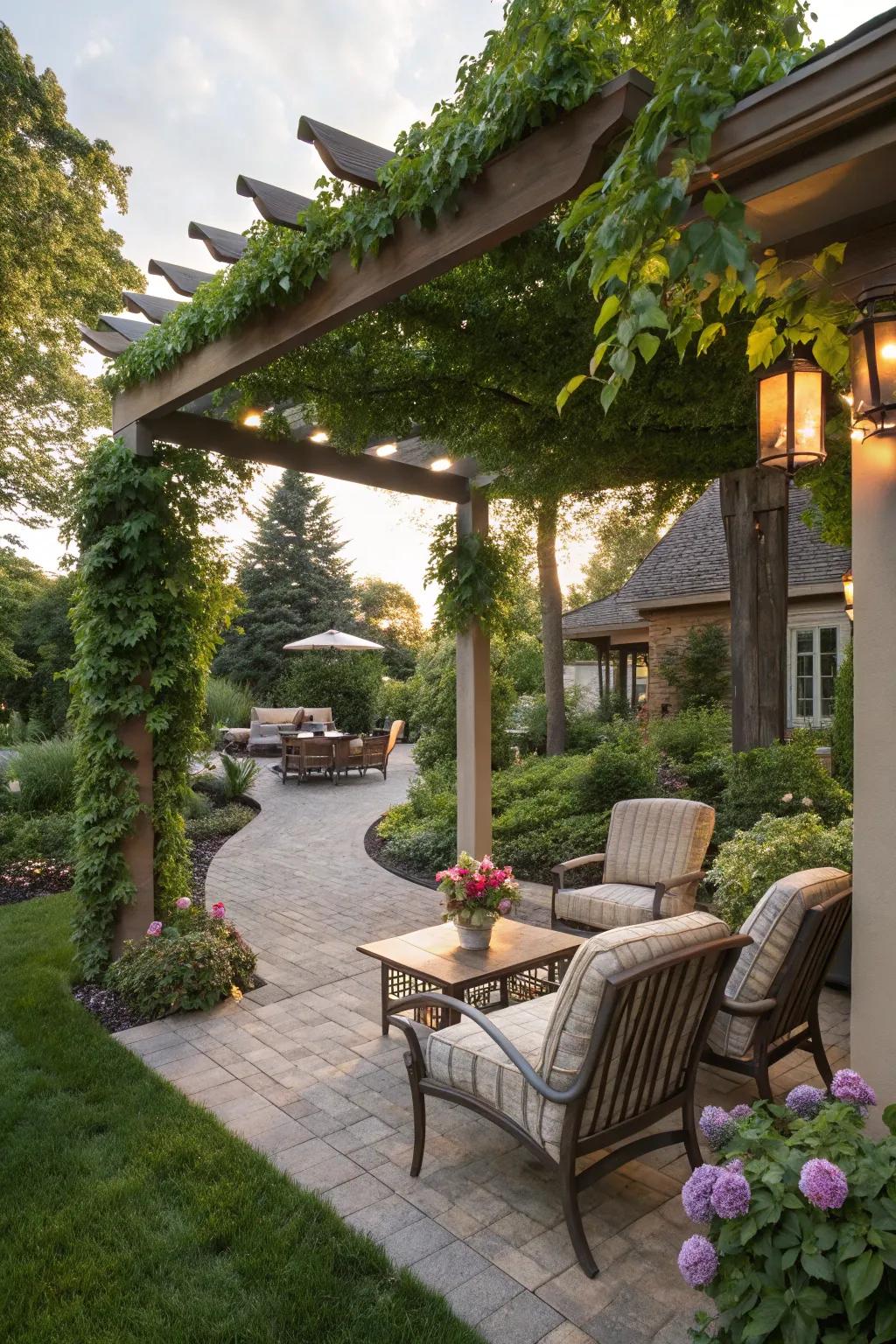
Create a welcoming outdoor living area with comfortable seating and a pergola for shade. In my backyard, this setup has become the perfect spot for summer evenings with friends.
Might be a good match:
- Outdoor Patio Furniture Set: Relax in style with a comfortable patio set, perfect for warm summer evenings.
- Pergola with Retractable Canopy: Add elegance and shade with an easy-to-use retractable canopy pergola.
- Outdoor String Lights: Illuminate your outdoor space with enchanting string lights for a cozy ambiance.
3. Defined Pathways and Walkways
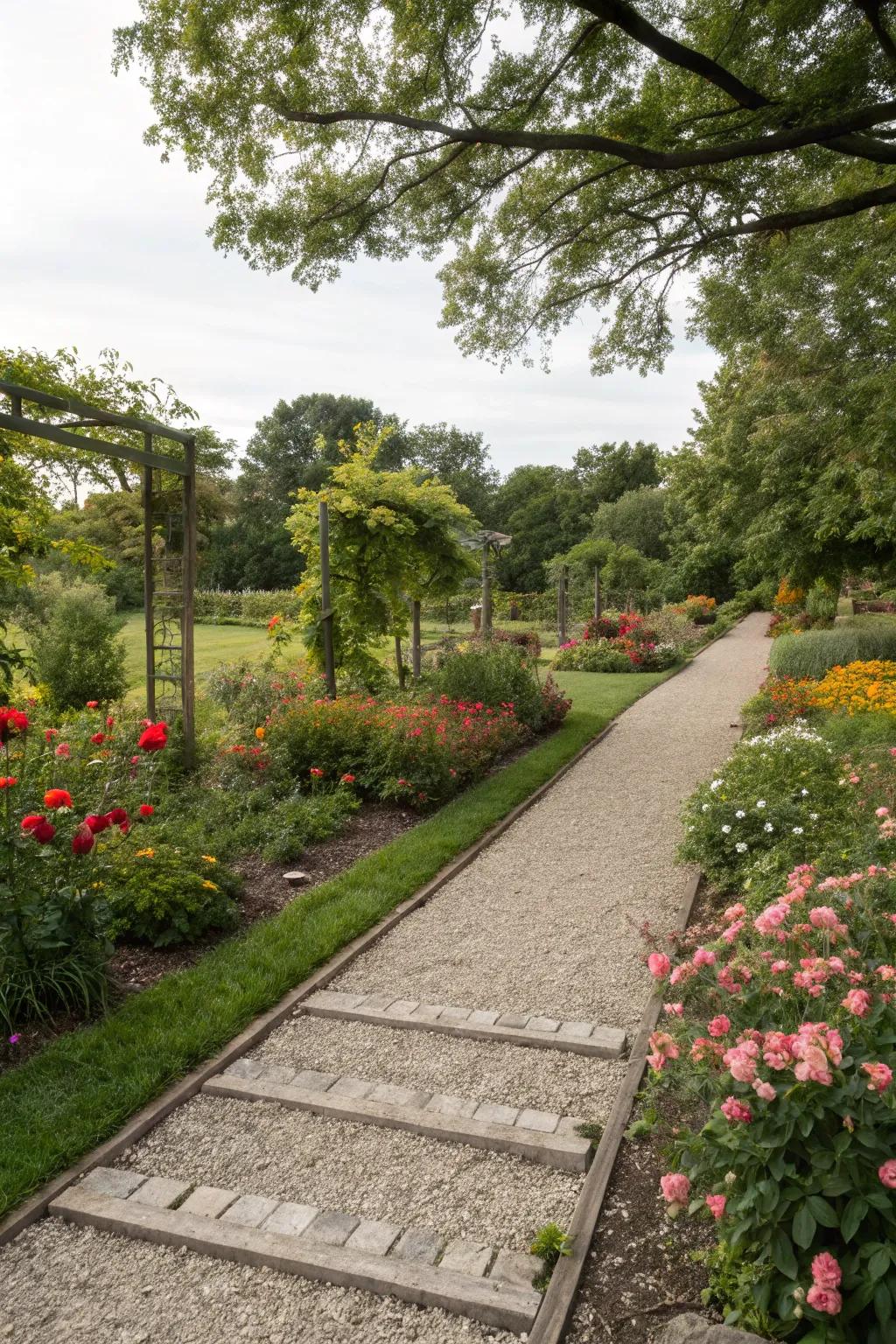
Defined pathways guide the flow of your garden, making it more accessible. I prefer using natural materials like gravel or wood chips for an organic look.
You might like:
- Natural Gravel for Pathways: Enhance your garden’s accessibility with natural gravel, providing an organic and rustic walkway charm.
- Wood Chips Mulch for Walkways: Create a welcoming path by using wood chips, offering a soft, natural feel underfoot.
- Garden Pathway Edging: Define your garden paths with durable edging, ensuring clean lines and structural integrity.
4. Enhancing with Garden Lighting
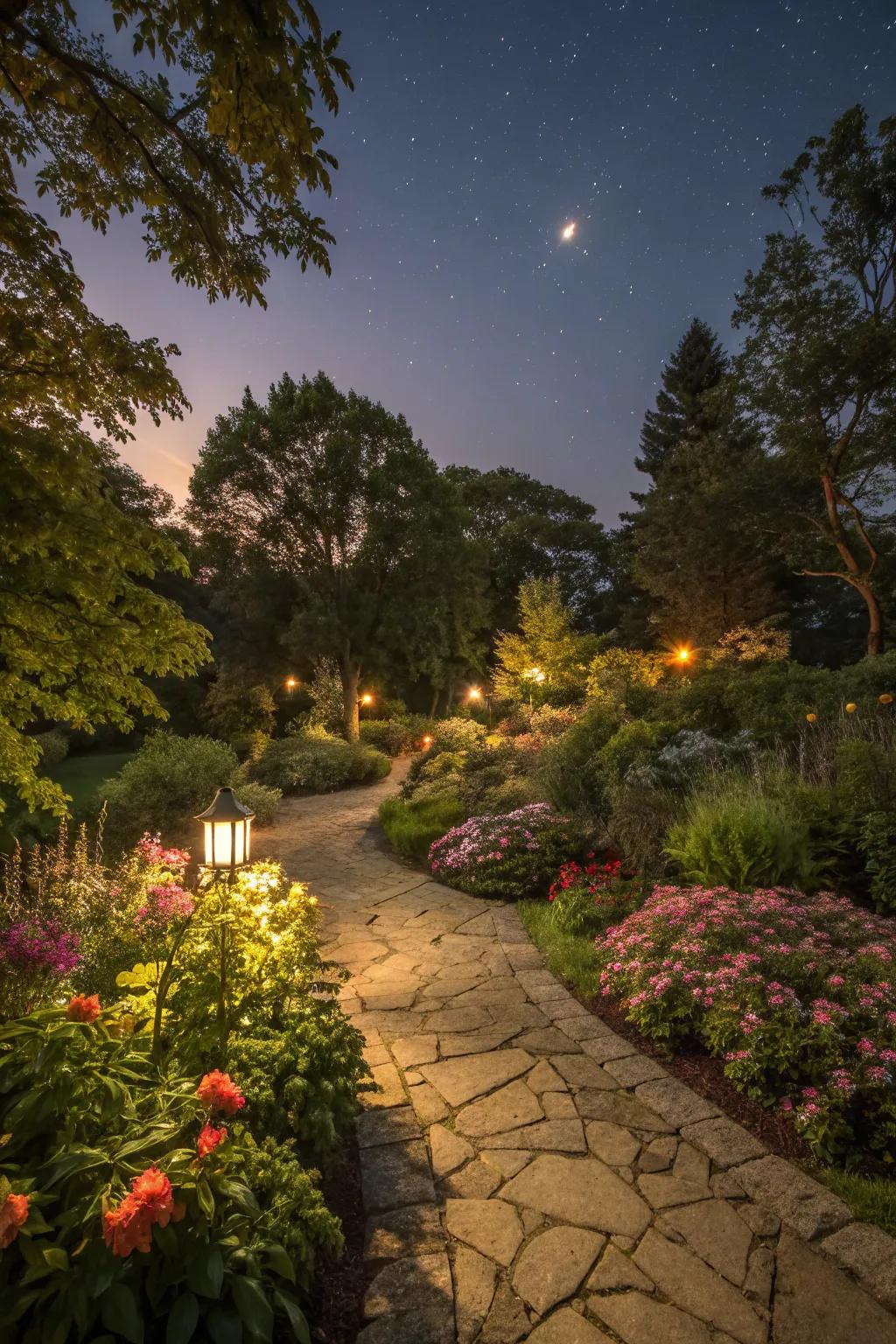
Install garden lighting to highlight your garden’s best features at night. I enjoy the magical glow it creates, transforming the space after sunset.
These products might help:
- Solar Pathway Lights: Elevate your garden’s beauty with solar pathway lights, ensuring a warm and inviting nighttime glow.
- LED Spotlights: Highlight your garden’s exquisite features using LED spotlights, adding depth and elegance to your space.
- String Lights with Warm Bulbs: Create a magical ambiance with warm bulb string lights, perfect for cozy garden evenings.
5. Creating Privacy with Greenery

Use privacy elements like hedges or trellises to create a secluded oasis. In my garden, a living fence of evergreens keeps things cozy and private.
Consider these options:
- Expandable Garden Trellis: Enhance your garden’s privacy effortlessly with an adjustable trellis for climbing plants.
- Artificial Boxwood Hedge Panels: Achieve lush privacy instantly with realistic boxwood panels, perfect for any garden setting.
- Fast-Growing Evergreen Seeds: Cultivate a living privacy fence with these fast-germinating evergreen seeds for lush results.
6. Rain Gardens for Sustainability
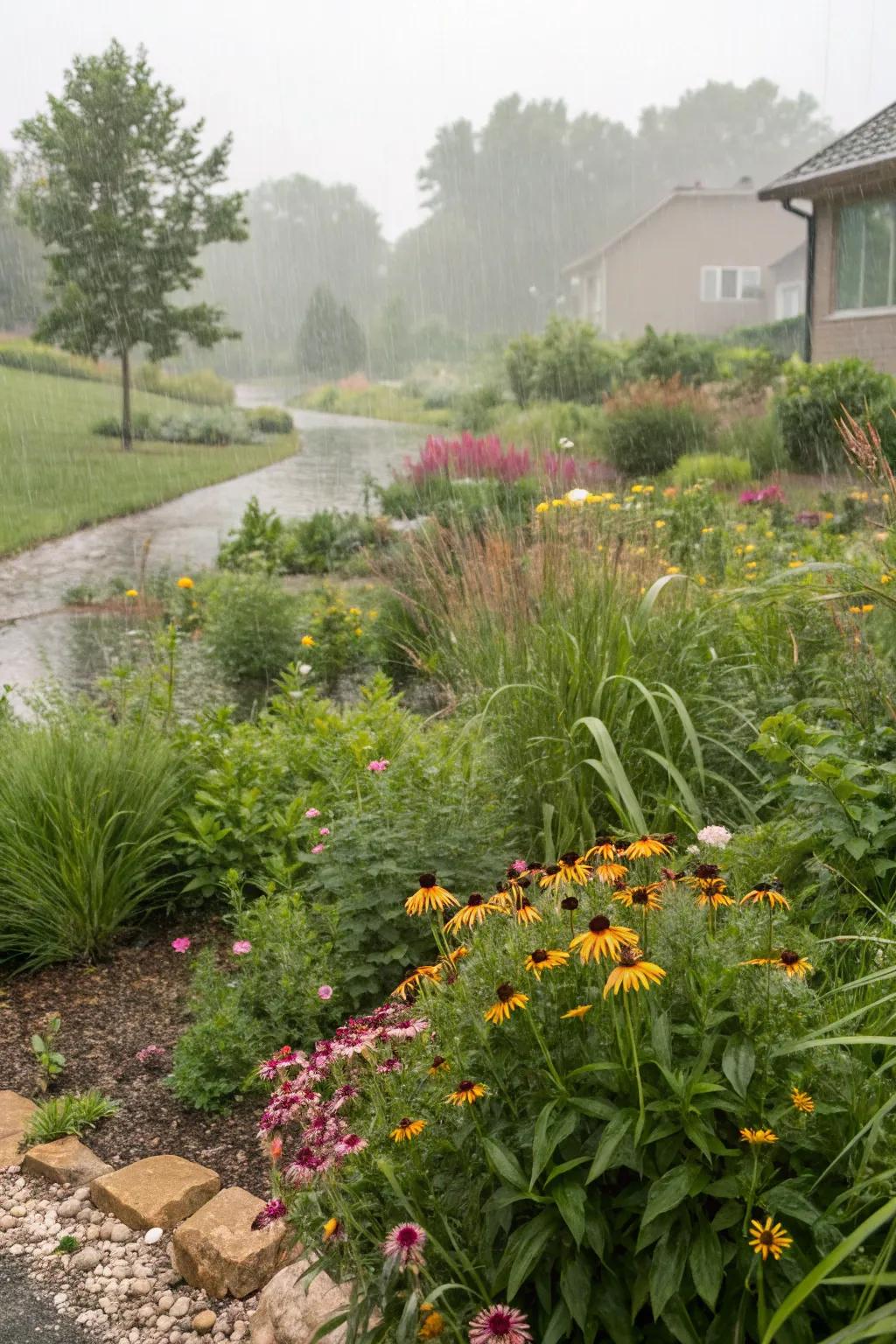
Create a rain garden to manage stormwater and support local wildlife. It’s been a game-changer in my garden, helping to reduce runoff while adding an ecological touch.
A few choices to try:
- Rain Garden Collection Seeds: Enhance your garden with native seeds that bolster biodiversity and support local wildlife.
- Permeable Landscape Fabric: Install landscape fabric to minimize erosion while allowing water infiltration in your rain garden.
- Rain Barrel with Spigot: Capture runoff with a rain barrel, conserving water for your rain garden during dry spells.
7. Eclectic Garden Themes
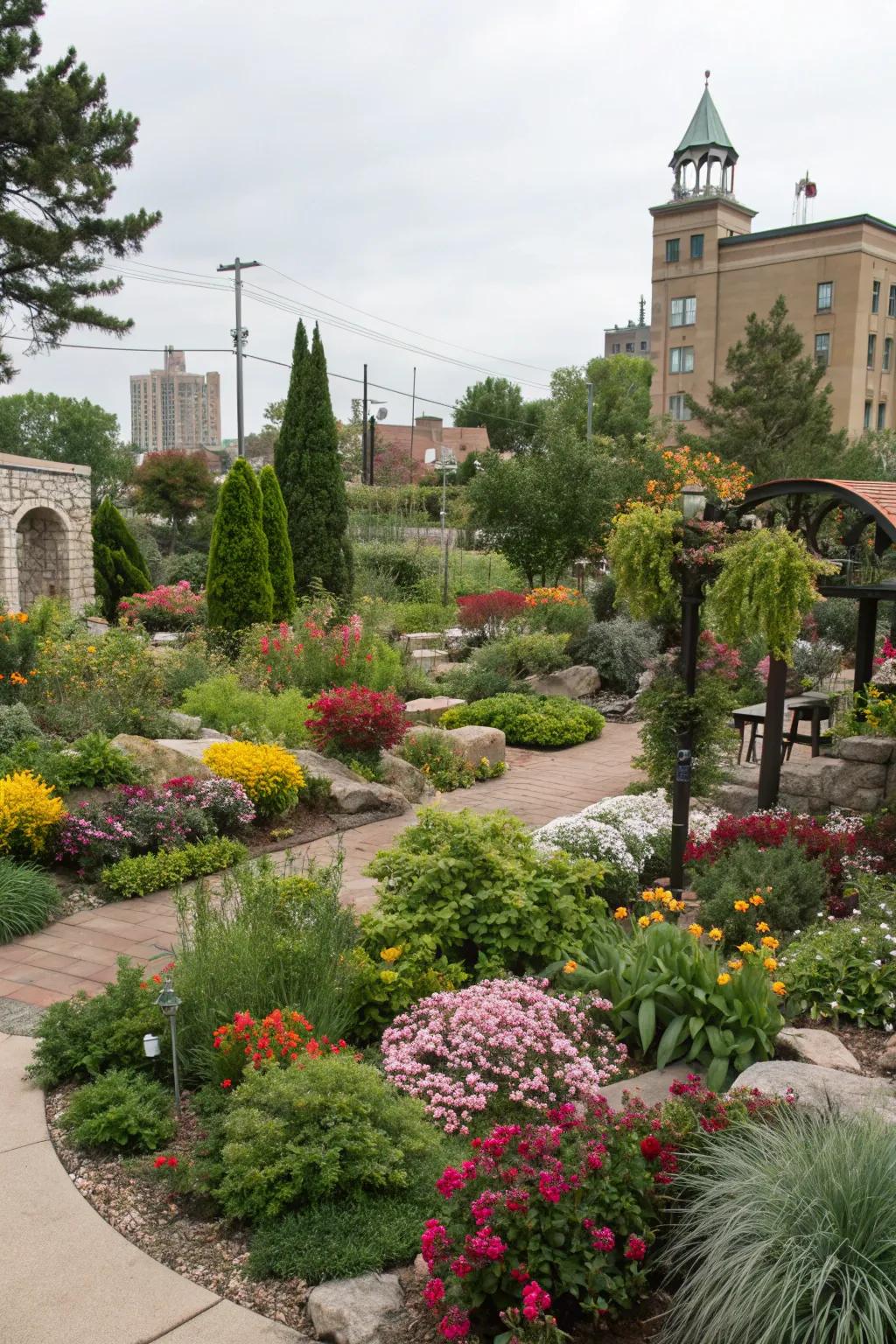
Experiment with themed gardens to reflect your personality. Whether it’s a minimalist zen garden or a lush tropical retreat, I find that themed spaces add a unique touch to any garden.
Items that may come in handy:
- Outdoor Garden Path Lights: Illuminate your garden paths and highlight unique features with stylish and efficient lighting solutions.
- Decorative Garden Arch: Enhance your garden entrance with an elegant arch, adding vertical interest and charm instantly.
- Colorful Perennial Flower Seeds: Add vibrant color with durable perennials that bloom beautifully season after season in your garden.
8. Microclimate Gardening
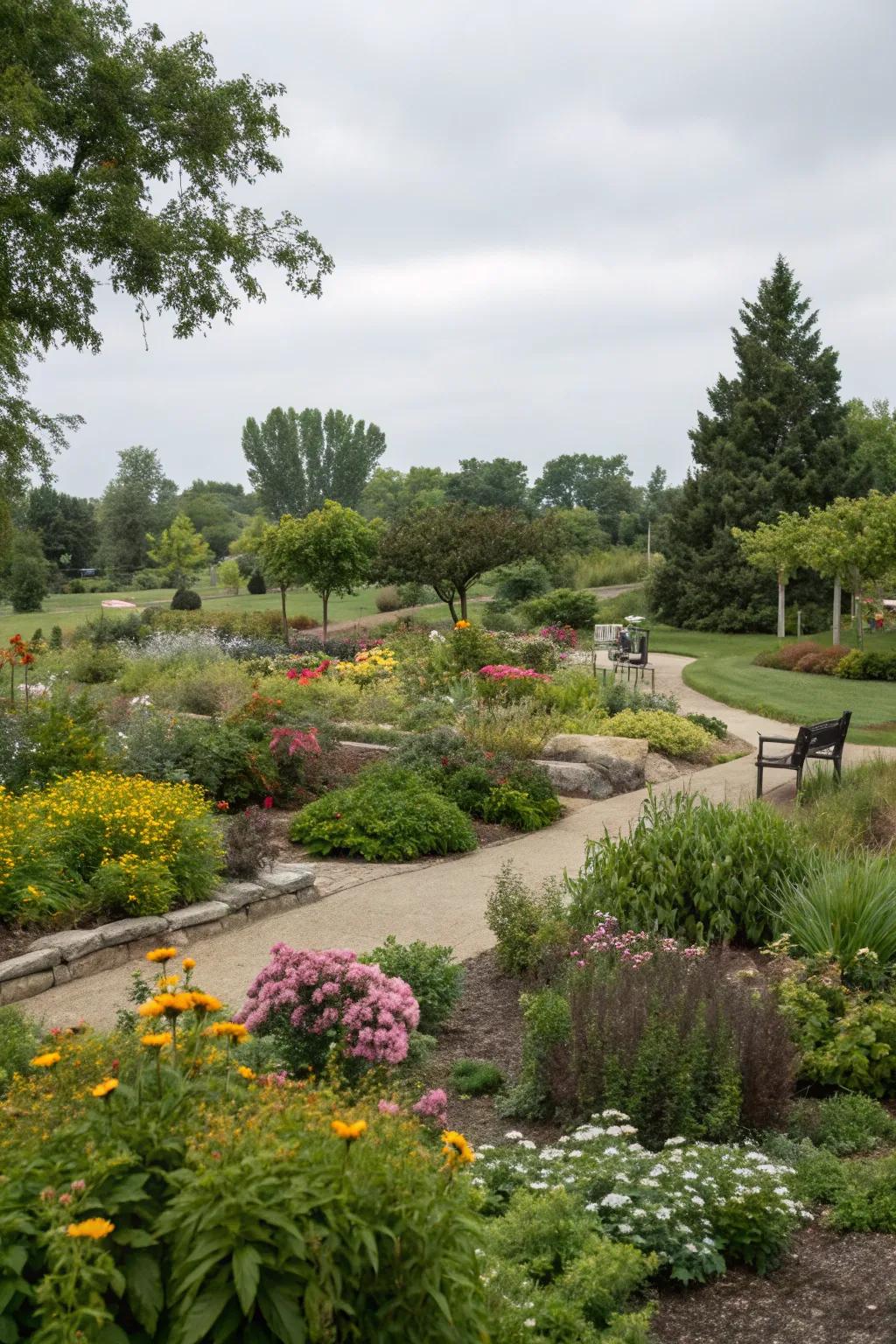
Tailor your garden to its microclimates by choosing plants that thrive in specific areas. This approach has helped me create a diverse and flourishing landscape in my own backyard.
Check if these fit your needs:
- Soil Moisture Meter: Ensure your plants thrive by measuring soil moisture accurately in diverse garden areas.
- Shade Cloth: Protect your sensitive plants by providing adjustable shade in sun-exposed areas.
- Weather-resistant Planters: Enhance your garden’s microclimates with durable planters for varied weather conditions.
9. Artistic Sculptures and Decor
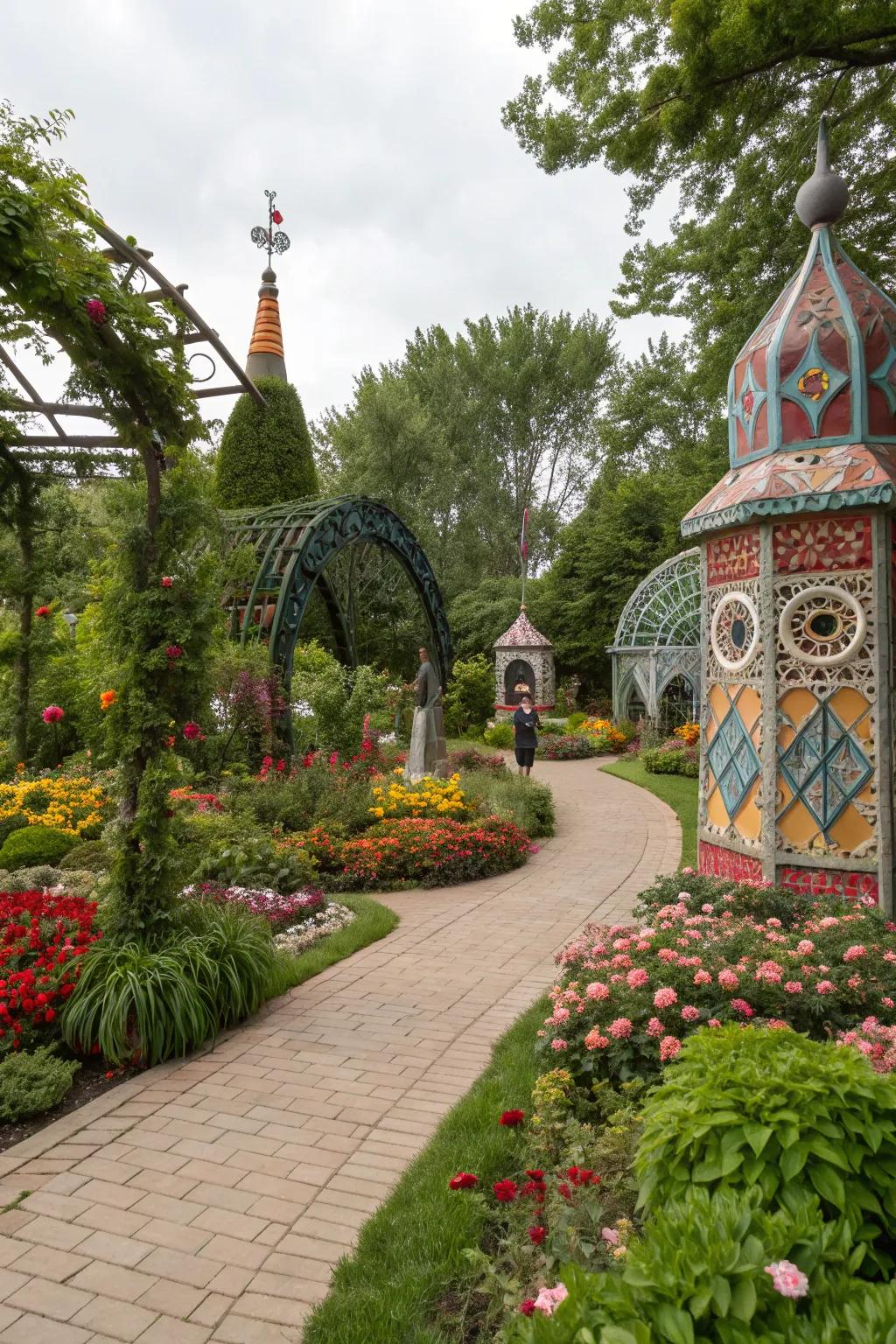
Add personality with artistic sculptures or garden decor. I love how a well-placed piece can become a conversation starter in my garden.
A few suggestions:
- Metal Garden Sculptures: Enhance your garden’s charm with striking metal sculptures that add depth and intrigue.
- Colorful Garden Statues: Introduce vibrant garden statues to make your space lively and visually captivating.
- Decorative Garden Arches: Transform your pathways with aesthetic arches that invite exploration and conversation.
10. Phased Planting for Growth
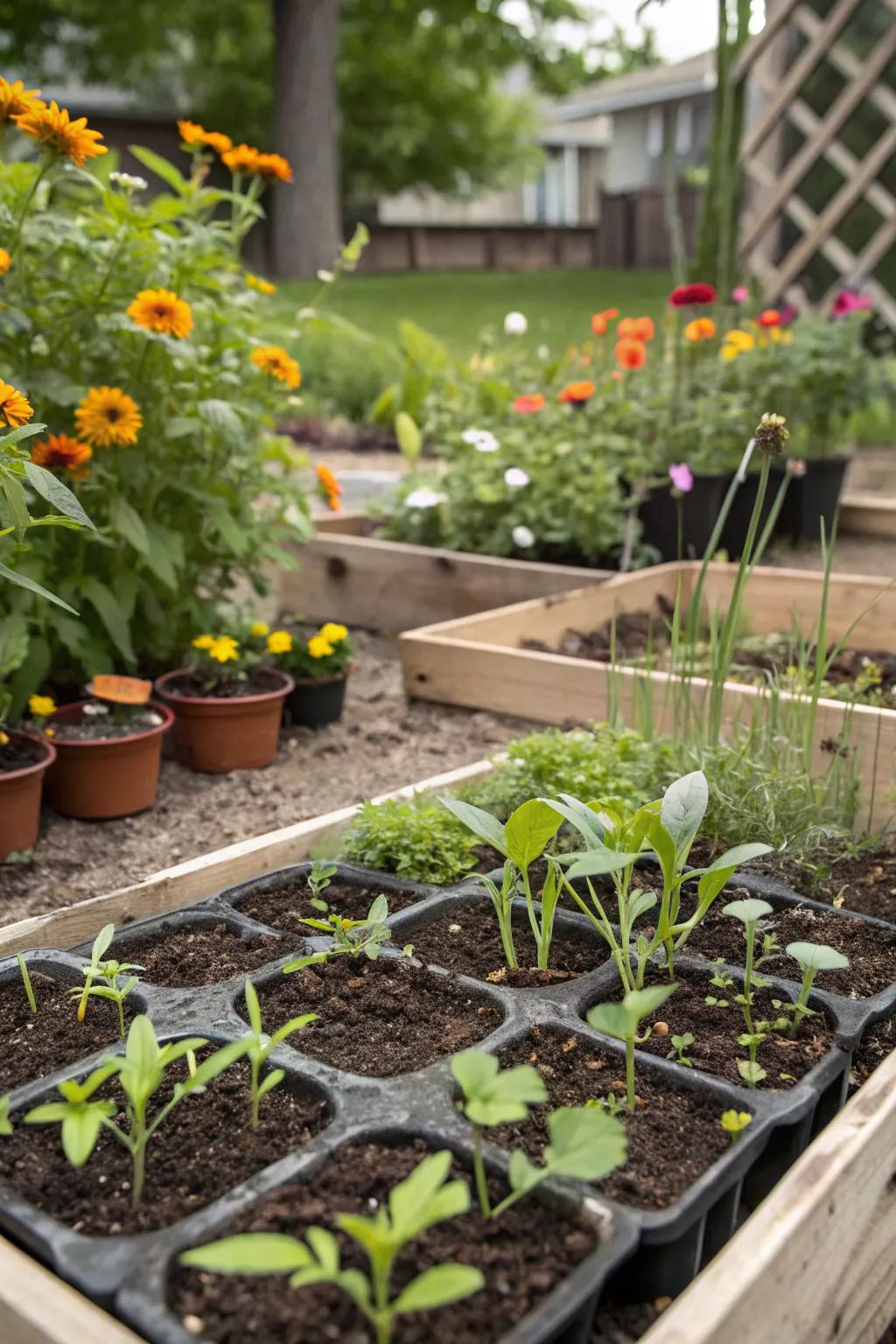
Consider phased planting to gradually transform your garden. Starting with shrubs and trees, I’ve found this method allows for a more manageable and visually pleasing development.
Try these:
- Set of Diverse Flowering Shrubs: Enhance your garden’s beauty with resilient shrubs that offer year-round color and texture.
- Adjustable Elevated Planter Boxes: Optimize your garden space with versatile planter boxes perfect for phased planting arrangements.
- Beginner’s Gardening Tool Set: Equip yourself with essential tools to easily manage your garden’s phased development.
11. Vertical Gardening Solutions
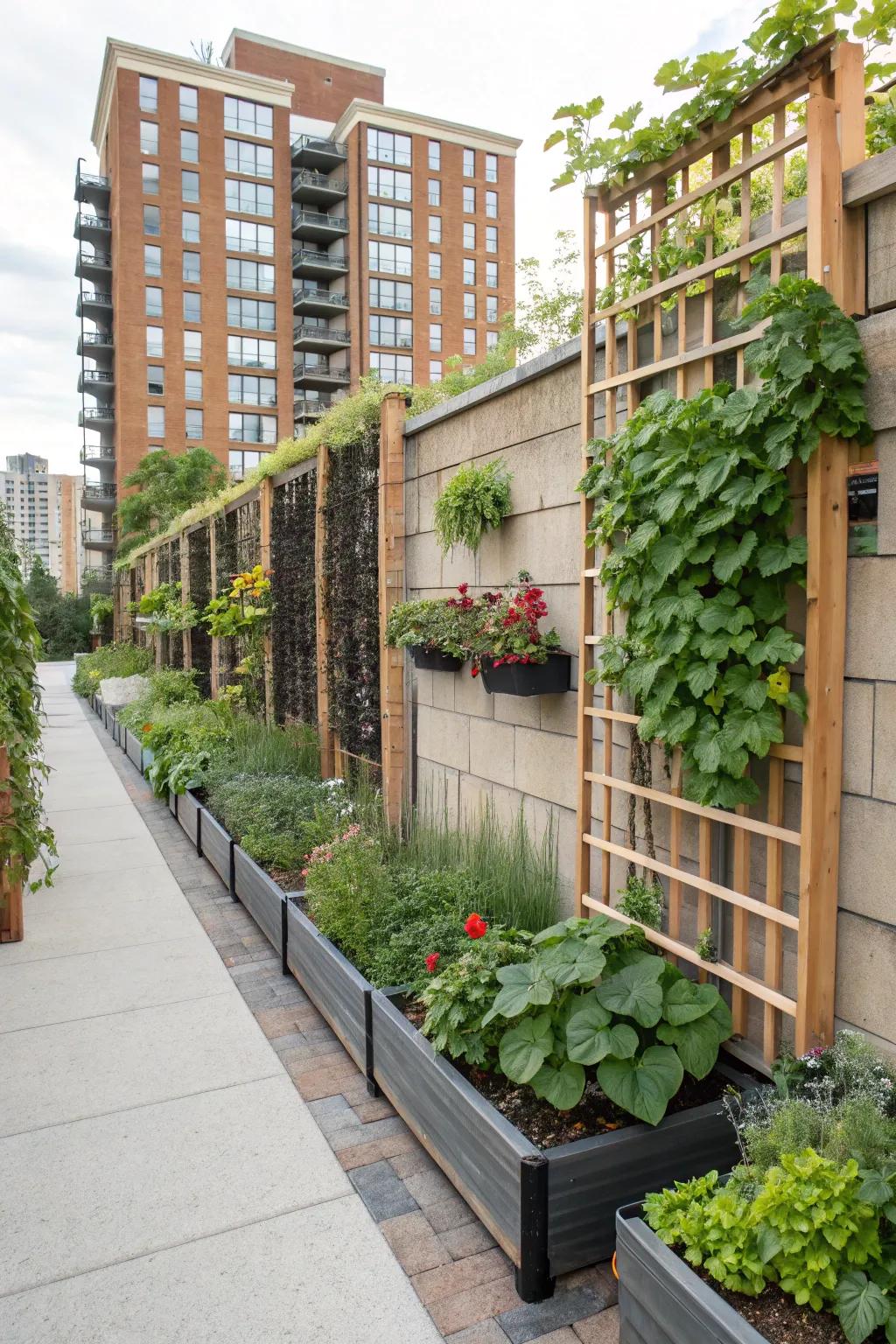
Maximize space with vertical gardening techniques. In my garden, trellises and wall planters have allowed me to grow more without expanding my footprint.
You might give these a try:
- Expandable Garden Trellis: Elevate your garden vertically with an expandable trellis for more planting space and style.
- Wall Planter Set: Beautify your walls with a planter set, perfect for creating a lush vertical garden.
- Adjustable Hanging Planters: Maximize your space with adjustable hanging planters suitable for various plants and herbs.
12. Enchanting Stone Pathways
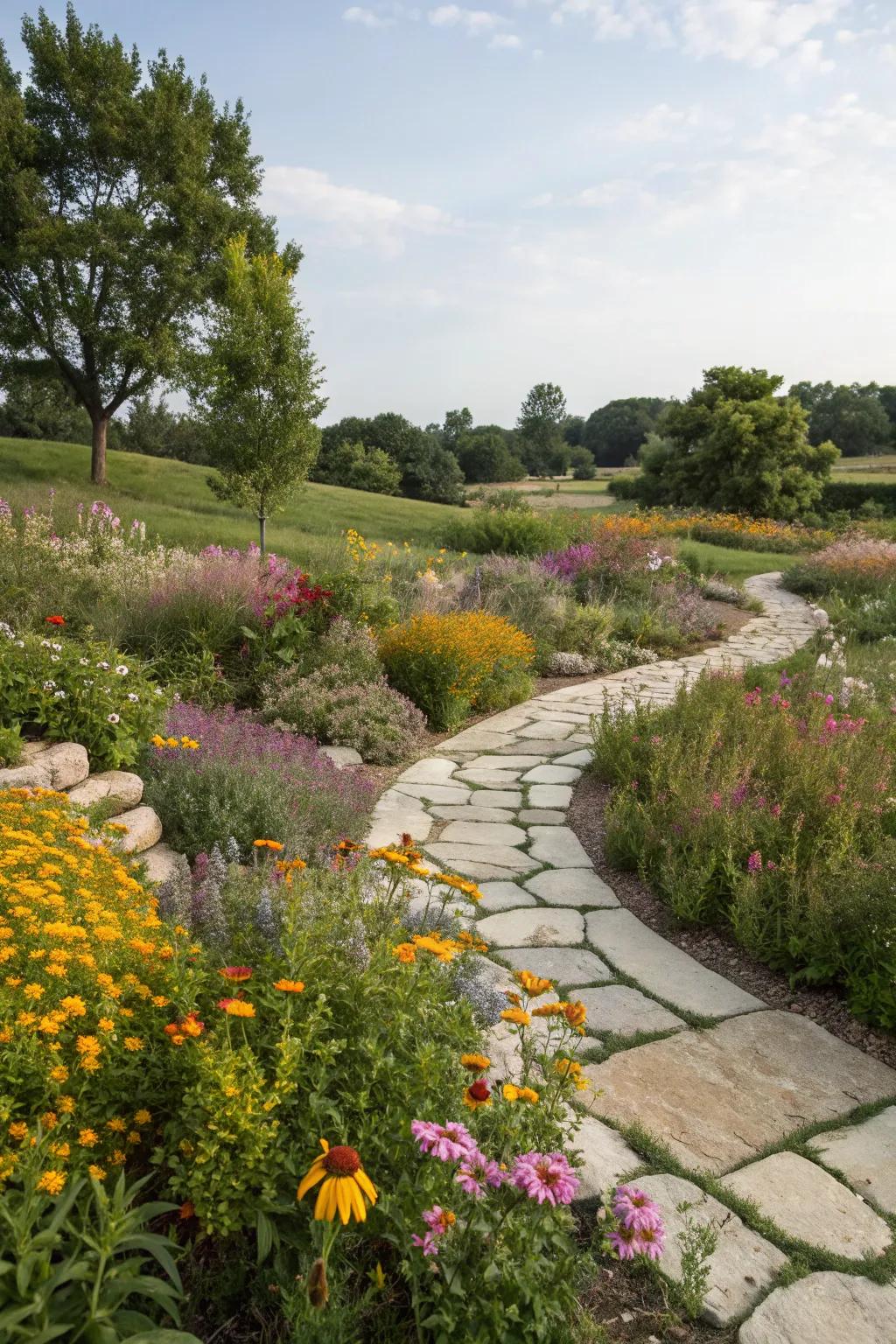
Adding stone pathways in your garden not only enhances its visual appeal but also provides a practical way to navigate through your greenery. I’ve found that a mix of natural stones can create a charming, rustic look that blends seamlessly with native plants.
A few things you might like:
- Outdoor Natural Stone Pavers: Enhance your garden’s charm with these durable stone pavers, blending beautifully with natural settings.
- Garden Pathway Edging Stones: Define your garden pathways with durable edging stones, ensuring a neat and structured landscape.
- Decorative Garden Gravel: Add texture and contrast to pathways with decorative gravel, creating visually appealing walkways.
13. Edible Garden Spaces
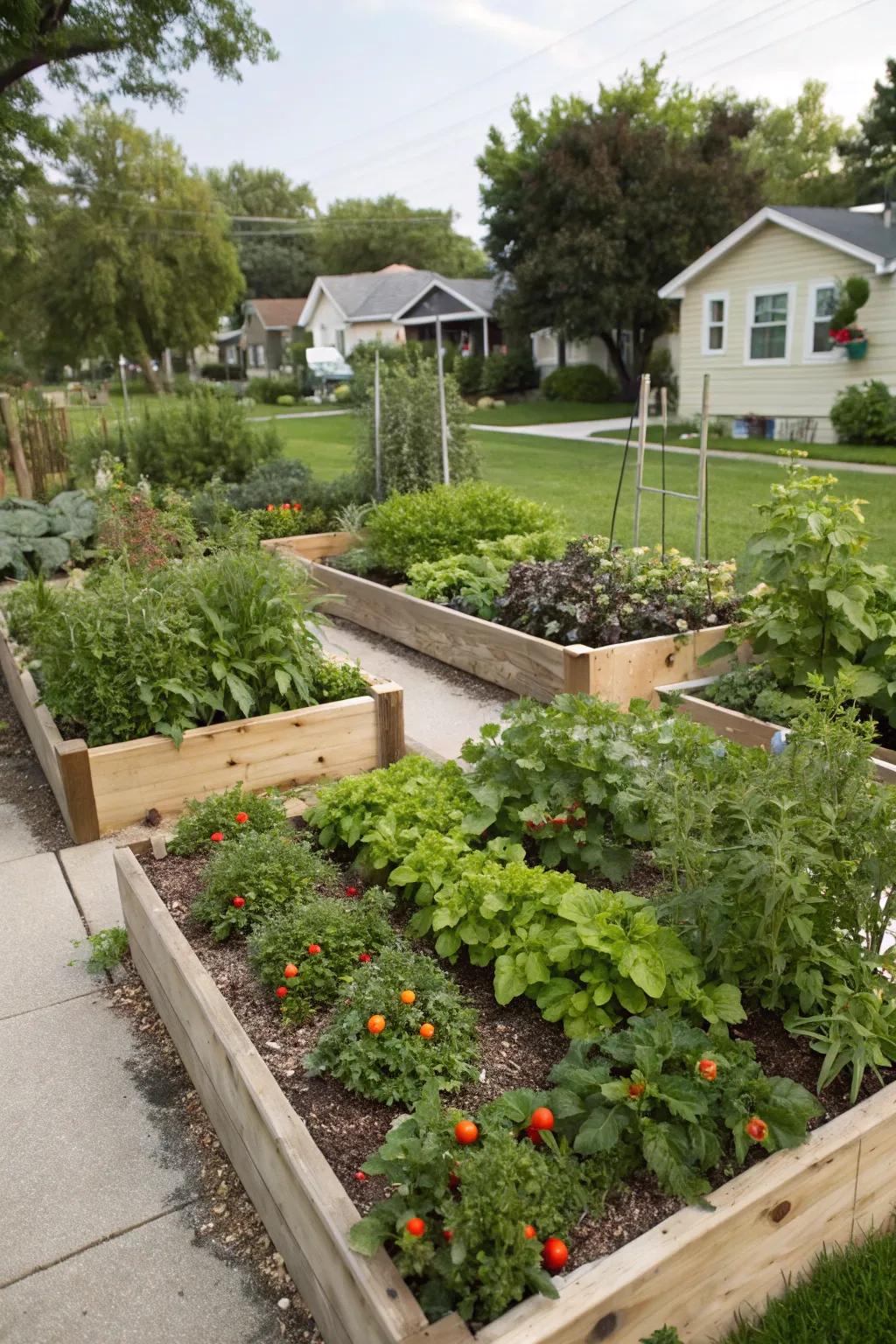
Why not grow your own food with edible garden spaces? I’ve turned part of my garden into a source of fresh herbs and veggies, and it’s both rewarding and delicious!
Possibly handy products:
- Raised Garden Bed Kit: Create an organized, efficient garden easily with a raised garden bed kit—perfect for any space!
- Herb Seed Variety Pack: Start growing your favorite fresh herbs at home with an easy-to-use seed variety pack.
- Organic Vegetable Fertilizer: Boost your garden’s productivity with organic vegetable fertilizer for healthier and tastier produce.
14. Tranquil Water Features
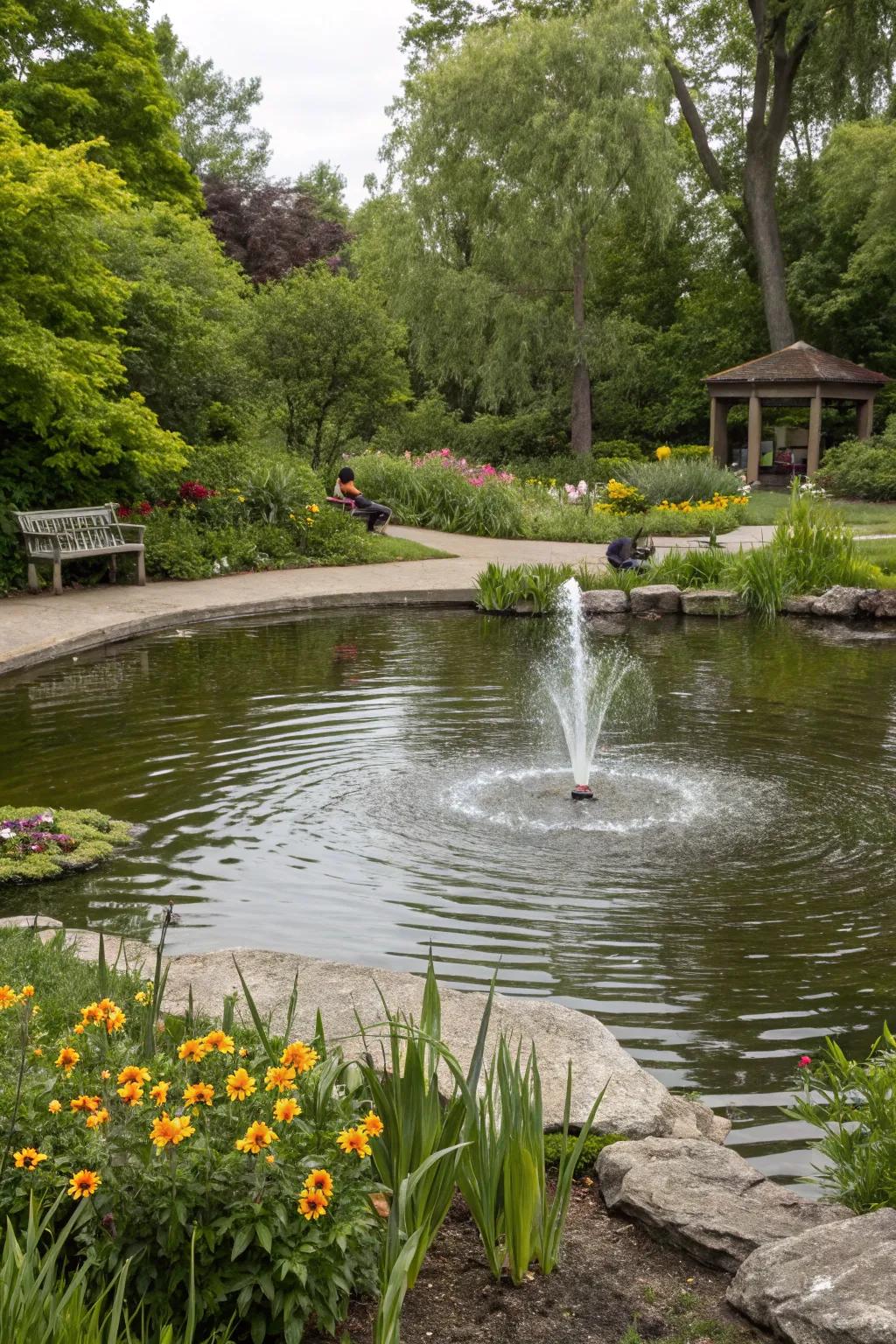
Incorporating a water feature like a small pond or fountain can add a serene element to your garden. I’ve noticed that the gentle sound of water creates a soothing atmosphere, enhancing the overall garden experience.
A few helpful options:
- Outdoor Fountain Pump: Transform your garden with a calming fountain. Enjoy the peaceful sound of flowing water.
- Garden Pond Liner: Create a serene pond environment. Enhance your garden’s tranquility with ease and reliability.
- Solar Water Pump Kit: Add an eco-friendly touch with a solar water pump. Energize your space effortlessly.
15. Native and Ornamental Plants
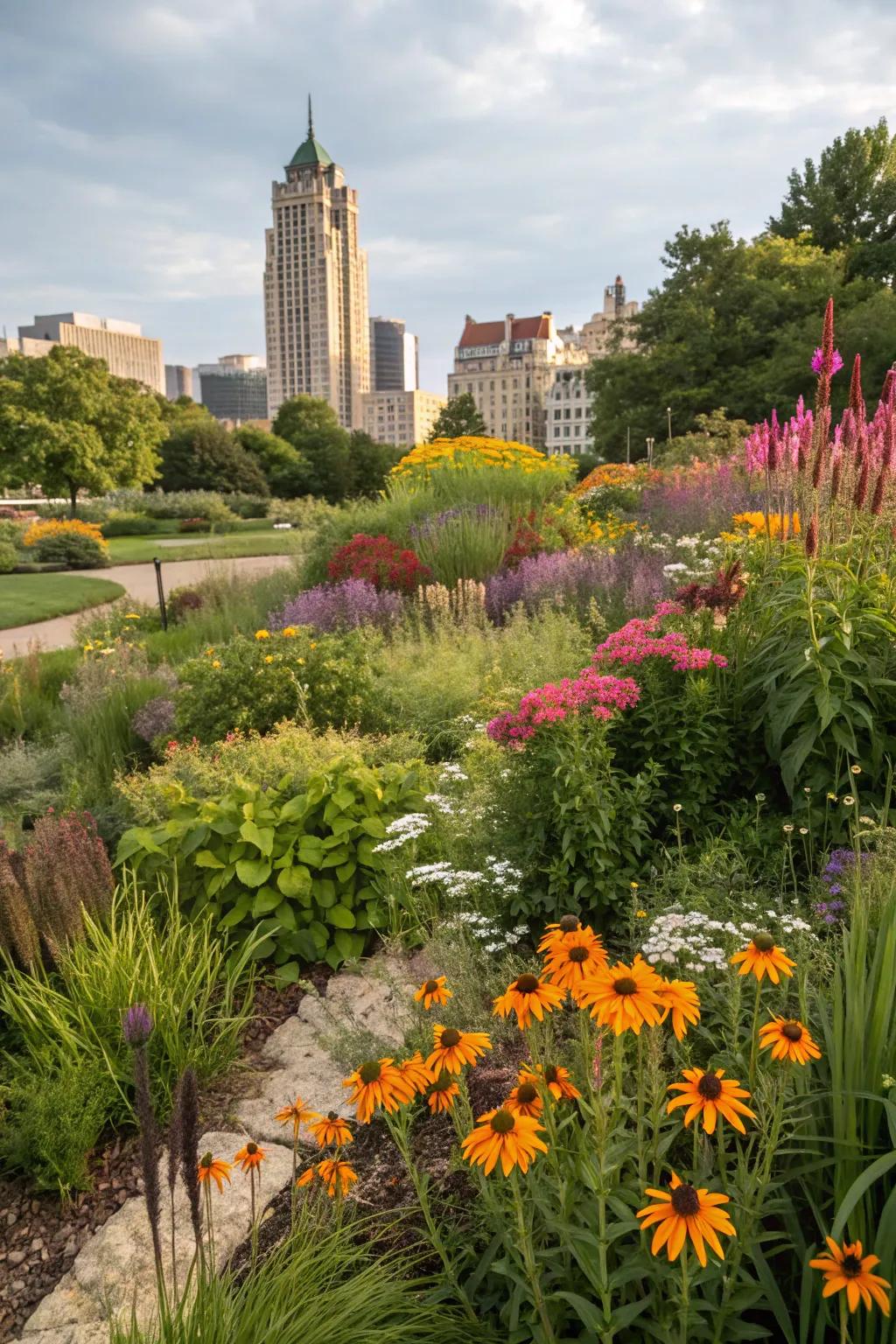
Mixing native and ornamental plants brings color and diversity to your garden. I love using local flora as they are well-adapted to Milwaukee’s climate and require less maintenance.
Some handy options:
- Native Wildflower Seed Mix: Enhance your garden with a blend of vibrant native wildflowers, easy to grow and maintain.
- Ornamental Plant Fertilizer: Boost your ornamental plants’ growth with this specially formulated, easy-to-use fertilizer.
- Garden Design Inspiration Book: Spark creativity with a guidebook full of beautiful garden design ideas and practical tips.
